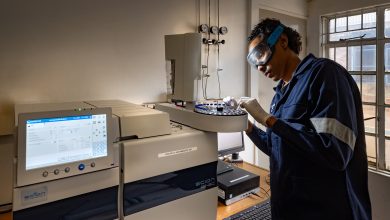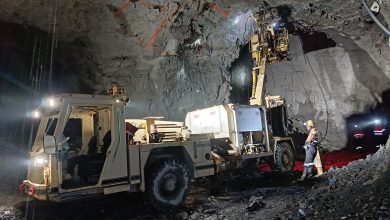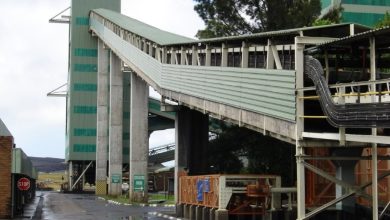
Lubricant-enabled reliability for mining equipment
Lubricant-enabled reliability service extends the life of assets
“At Steelpoort – a chrome mining project, WearCheck customer recently embarked on a reliability-improvement programme. WearCheck technicians identified soot levels to be exceptionally high engines used in LHDs. An audit was completed and recommendations for improvements were broken down into quick fixes, as well as medium- and long-term goals.”
Lubricants play a critical role in keeping the component parts of industrial machinery moving and operating smoothly, particularly in the mining sector. Keeping the lubricants clean and contaminant free is a sure way to extend their lifespan, improve their function and that of the machines they lubricate, and save money on maintenance costs at the same time. This forms the basis of any good lubricant-enabled reliability (LER) programme.
LER is just one of the many services offered by condition monitoring specialist company, WearCheck, via its Lubrigard division.
In this article, Chris Hattingh, WearCheck’s Lubrigard manager, discusses a case study in which refinements to the filtration and lubrication systems were able to extend the life of a key engine at a mine.
Background
At Steelpoort – a chrome mining project, WearCheck customer recently embarked on a reliability-improvement programme, which focused on the handling and management of commodities used in the mine’s production equipment (LHDs – load, haul, dump machines), namely fuel, lube, air and coolant. An audit was completed and recommendations for improvements were broken down into quick fixes, as well as medium- and long-term goals.
When examining the customer’s oil analysis data, WearCheck technicians identified soot levels to be exceptionally high on both the Cummins and John Deere engines used in these LHDs. These machines operate 80 hours a week and are serviced at around the 160 hour mark. Attempting to push past this point would negatively affect the life cycle of the engine.
Due to high levels of wear, increased viscosities, and a significant spike in soot from time to time, these engines had to have their service intervals reduced from the OEM’s recommendation of 250 hours. The decision to service these machines comprehensively every two weeks, coupled with engine failures, became a big cost pressure for the mine.
The problem
Soot is a by-product of combustion. Increased levels of soot could indicate many things but, in this case, WearCheck found that after the 160 hour mark, these air filters were heavily loaded with process contamination. The poor air/ fuel mixture no doubt caused the high soot levels, and an attempt to bring soot levels down was initiated.
The solution
The filter used by the OEM on this LHD was a Donaldson PowerCore. This filter has a conventional primary and safety filter set-up with a built-in pre-cleaner. Given that the oil reports were highlighting major problems at the air filter, WearCheck advised the client to substitute the PowerCore filter with another Donaldson filter, as it was found that the FRG series housing (FRG11-0241) of this model would be the right choice for this application. This filter was added to the NEZROTEK air pre-cleaner.
The results
Hatting reports that the results from this trial were instant. ‘After the first sample, we could see an improvement in the levels of soot, which got progressively better over time. This is what is referred to as an “optimised state”. Loosely translated, this means that the engine is basically happier than before.’
Hattingh continues, ‘One of the more notable trends was that of the Total Base Number (TBN). Less harmful by-products of combustion meant that the oil did not have to work as hard, thereby increasing the TBN to healthier levels.
‘On a side note, the pre-cleaner removed an average of 139 grams of process contamination over a six week period.’
Conclusion
Hattingh was happy with the outcome of the filter change. ‘We have, since these results, marginally increased the size of the pre-cleaner to allow for more air flow and lower clean deferential pressure, which should allow for even longer filter life. This, in conjunction with lower overall wear and improved oil health, allows us to look at extending the drain interval. This will be a consideration, however – for now – the focus is on getting maximum life out of the capital-intensive components.’
In addition to LER, WearCheck is a leading provider of many other predictive maintenance solutions. The company’s core service is the scientific analysis of used oil, fuel and other fluids, which entails analysing fluid samples for trace particles, to indicate which component is suffering unusual wear patterns.
WearCheck’s other reliability solutions techniques include asset reliability care (ARC), transformer chemistry services and advanced field services (AFS) – non-destructive testing (NDT), technical compliance (TC) and rope condition assessment.
WearCheck Water tests wastewater, groundwater and surface water in areas surrounding mining and exploration sites. Compliance with municipal by-laws and environmental safety standards allows for the safe disposal of wastewater into streams and rivers.
WearCheck’s footprint spans 16 world-class laboratories in nine countries across Africa, Dubai and India. The company services clients in many additional industrial sectors including renewable energy fleet management, aviation, maritime and more.
Please visit www.wearcheck.co.za, email support@wearcheck.co.za, call WearCheck on +27 (31) 700-5460, or contact Chris Hattingh on chrish@lubrigard.co.za or cell +27 (0)83 625-0808






